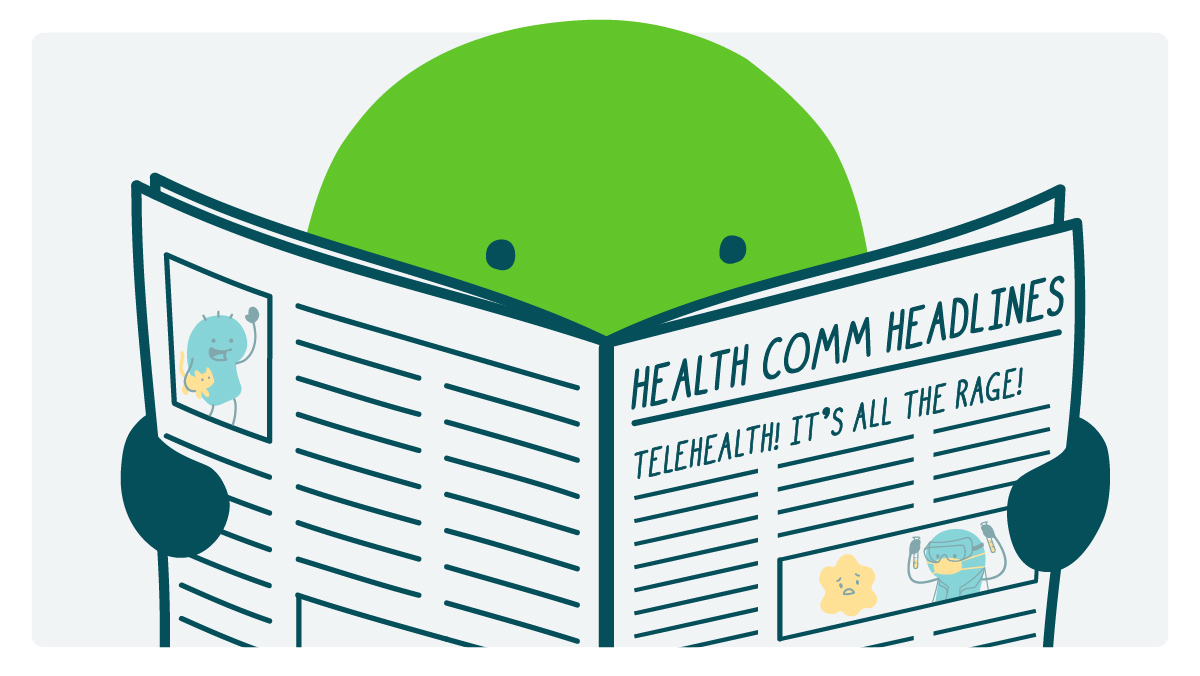
Here at We ❤️ Health Literacy HQ, we’re feeling pretty enthusiastic about telehealth. It’s a great option for getting routine health care without anxiety about getting sick from sitting in a waiting room. So we’re not surprised that telehealth use increased sharply early in the pandemic — and we’re confident it’s not going anywhere.
This means that, as health communicators, we’ll be talking about telehealth plenty in the foreseeable future — which is why we want to learn as much as we can about it. And we have questions, like: What do people love about telehealth? What do they like less? How will telehealth change post-pandemic?
So, dear readers, we’ve rounded up some articles that help answer our questions — and we’re sharing them with you today in this second installment of our Health Comm Headlines series. (Check out our inaugural post, where we shared some resources about FDA approval of Pfizer’s COVID-19 vaccine.) We’re hoping you find these articles interesting — and maybe even helpful for talking telehealth with your audiences!
And remember that we want to hear from you! Share your thoughts on all things telehealth by responding to this email or tweeting at us.
- Patients Say Telehealth Is OK, but Most Prefer to See Their Doctor in Person (NPR)
Through personal anecdotes and data-driven findings, this article demonstrates why people typically prefer in-person visits despite a common desire for convenience —which telehealth can provide.
- What Happens to Telemedicine After COVID-19? (Association of American Medical Colleges)
This piece explains how state and federal agencies acted to rapidly expand telehealth early in the pandemic — and have since ended some of the regulations that increased access to telehealth services for people nationwide. The article also details what it will take to bolster telehealth access for the long haul.
- As Internet Access Limits Telehealth’s Reach, Insurers Are Starting to Cover the Bill (STAT)
This article highlights efforts to bring telehealth to people with limited to no internet access. Thankfully, as the author explains, health plans are working on solutions to tackle the 3 legs of digital access: “One is having equipment, two is having broadband access, and the third is literacy,” says Sara Ratner, senior vice president of government markets and strategic initiatives at Icario Health.
- Telehealth a Lifeline for Patients with Substance-Use Disorders (American Medical Association)
This article delves into the reasons why telehealth is an especially important option for people who need treatment for substance use disorders. As the author puts it: “Phone or video calls can help reduce the stigma wrongly linked with obtaining effective [substance use disorder] treatment, and the convenience of online formats can make care more accessible.”
- The Surge of Telehealth During the Pandemic Is Exacerbating Urban-Rural Disparities in Access to Mental Health Care (Health Affairs)
It’s no surprise that the highest use of telehealth during the pandemic has been for mental health treatment. But unfortunately, as this article explains, telehealth use during the pandemic has been much lower in rural communities than urban ones. The authors end by laying out a few strategies — like investing in “telehealth centers” — for improving telehealth access in rural communities.
Browse recent posts